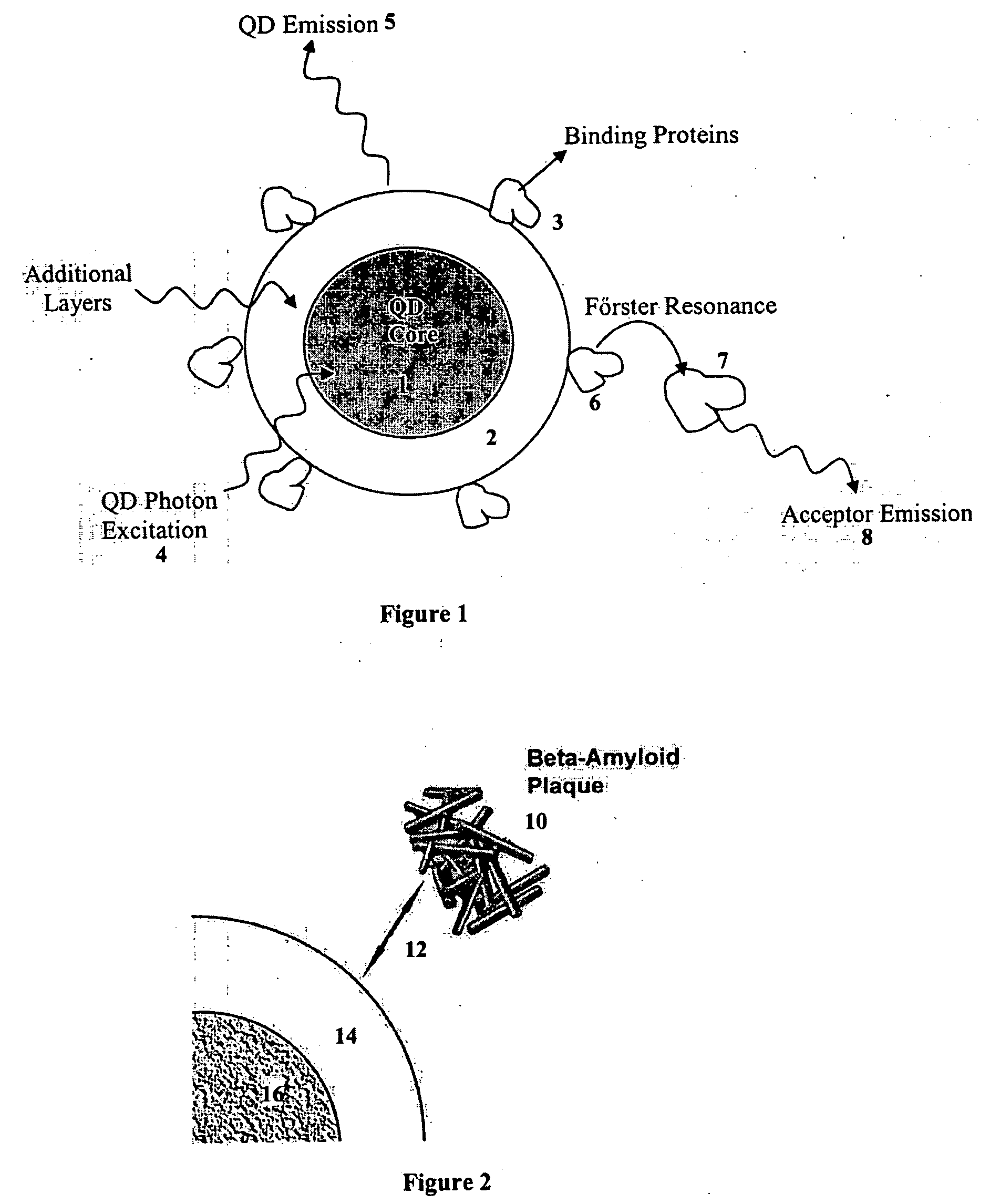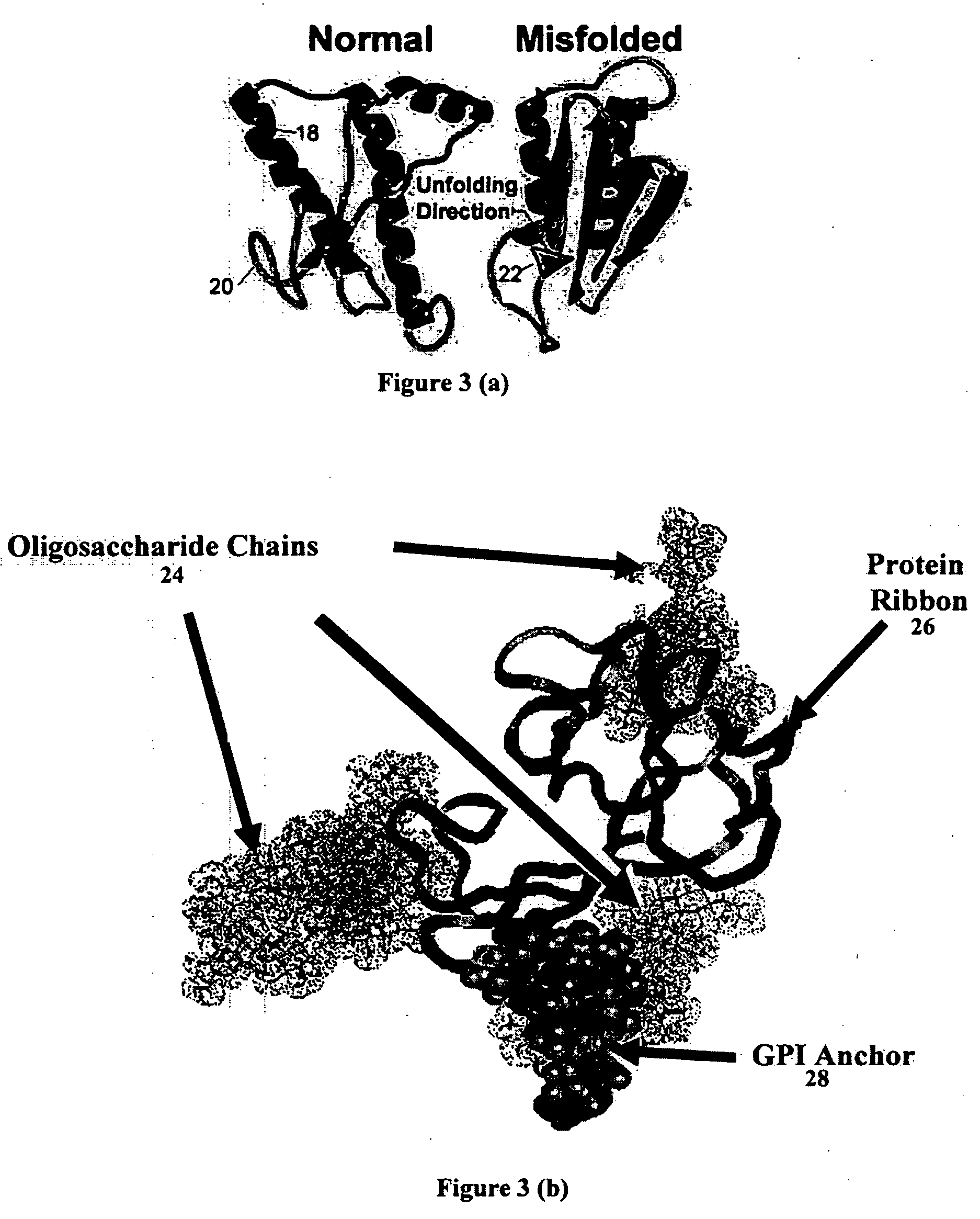Nanobioprocessor for protein and cell therapy
a bioprocessor and protein technology, applied in the field of biomedical nanotechnology, can solve the problems of not considering nanomedicine applications and none of these methods based on nanotechnology in particular, and achieve the effect of enhancing the motion of the bloodstream
- Summary
- Abstract
- Description
- Claims
- Application Information
AI Technical Summary
Benefits of technology
Problems solved by technology
Method used
Image
Examples
Embodiment Construction
[0043] The subject matter described herein is directed to heating and controlling the temperature of a quantum dot remotely via energy and / or radiation transfer. This technique permits the application of QDs to molecular cell biology and protein therapy beyond their application as optical probes.
[0044]FIG. 1 shows a schematic of a typical quantum dot, comprised of a core 1, additional coated layers to protect the core and make them water soluble 2. Also shown are binding proteins 3, photon excitation 4, the QD emits at a different wavelength 5 and non-radiatively transfers energy 6 to a fluorescent dye molecule 7, where the acceptor emission occurs at a different wavelength 8.
[0045]FIG. 2 displays a beta-amyloid plaque 10, which is one of the major causes of Alzheimer's disease (AD). This plaque is in the neighborhood of a nerve cell membrane 14 and the interior of a nerve cell 16. Number 12 represents a type of peptide channel where the beta-amyloid plaque interacts with the cell...
PUM
| Property | Measurement | Unit |
|---|---|---|
| band gap energies | aaaaa | aaaaa |
| emission spectra | aaaaa | aaaaa |
| NIR range | aaaaa | aaaaa |
Abstract
Description
Claims
Application Information
 Login to View More
Login to View More - R&D
- Intellectual Property
- Life Sciences
- Materials
- Tech Scout
- Unparalleled Data Quality
- Higher Quality Content
- 60% Fewer Hallucinations
Browse by: Latest US Patents, China's latest patents, Technical Efficacy Thesaurus, Application Domain, Technology Topic, Popular Technical Reports.
© 2025 PatSnap. All rights reserved.Legal|Privacy policy|Modern Slavery Act Transparency Statement|Sitemap|About US| Contact US: help@patsnap.com



